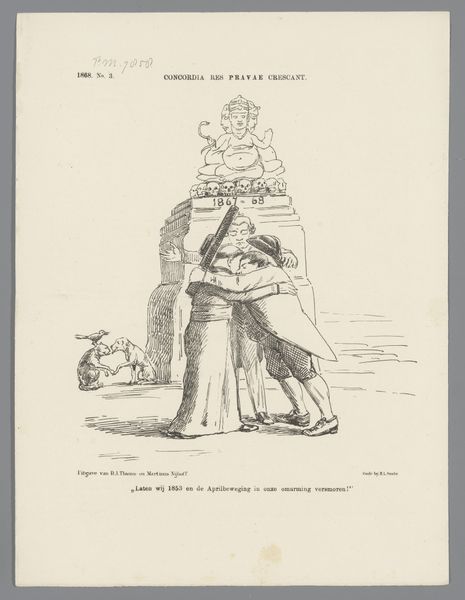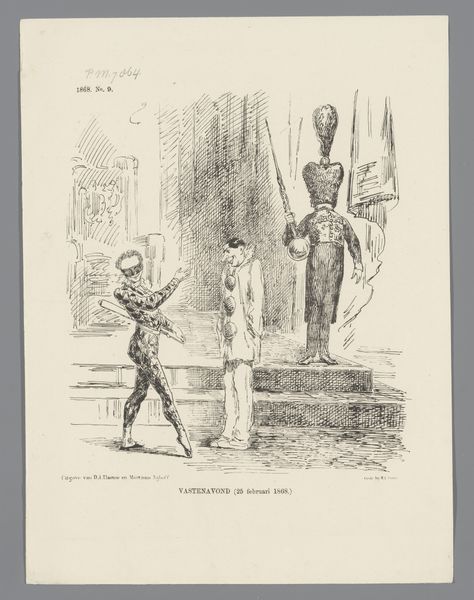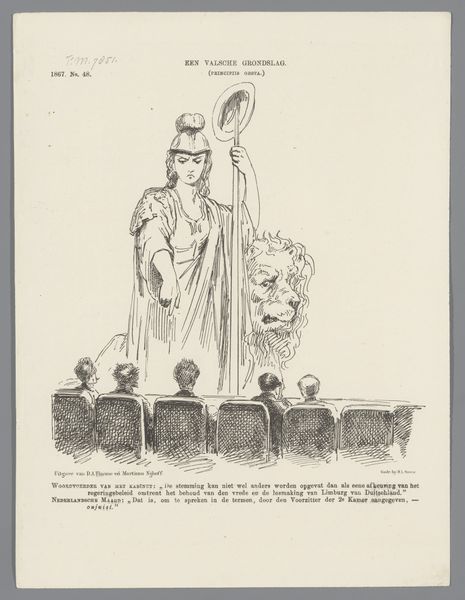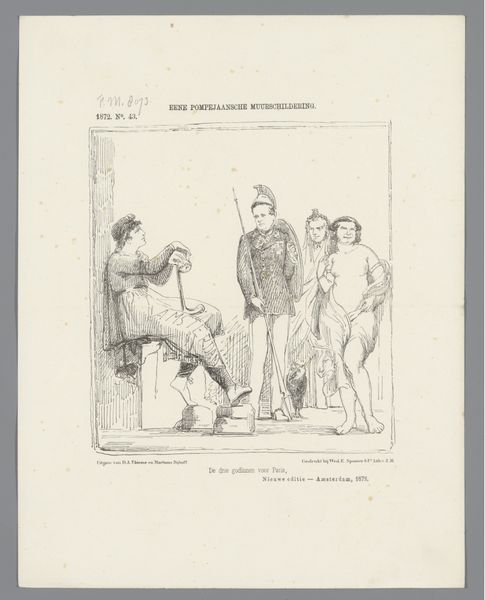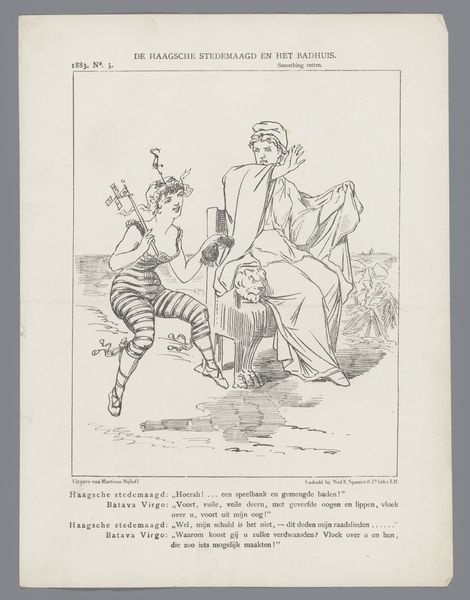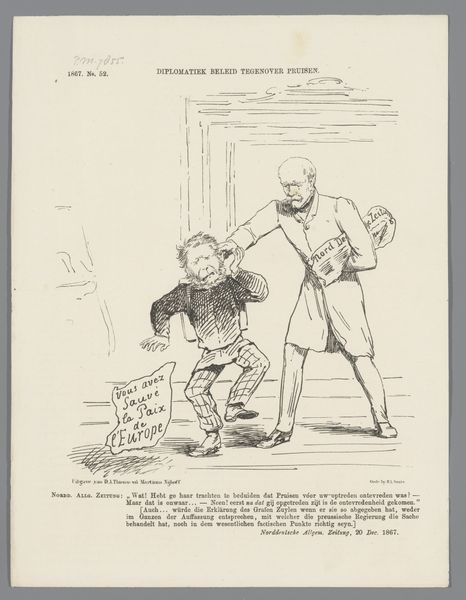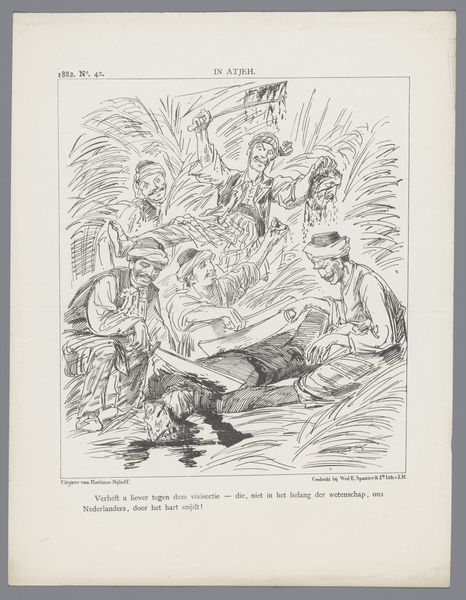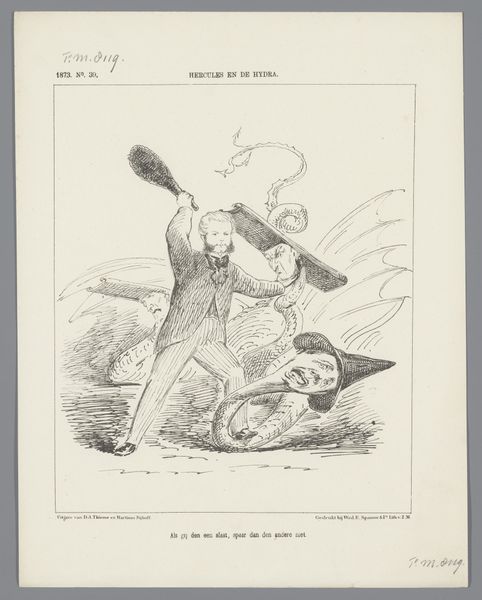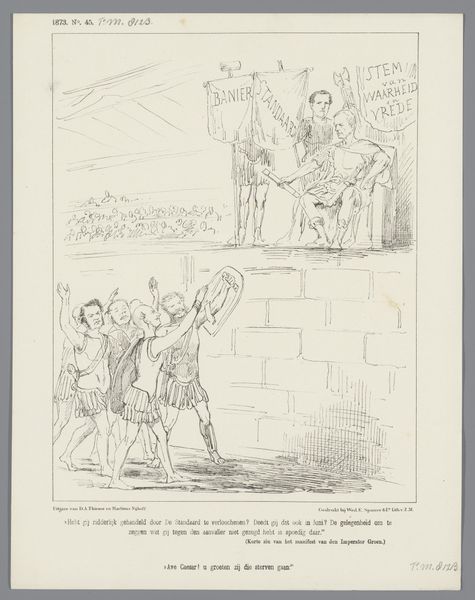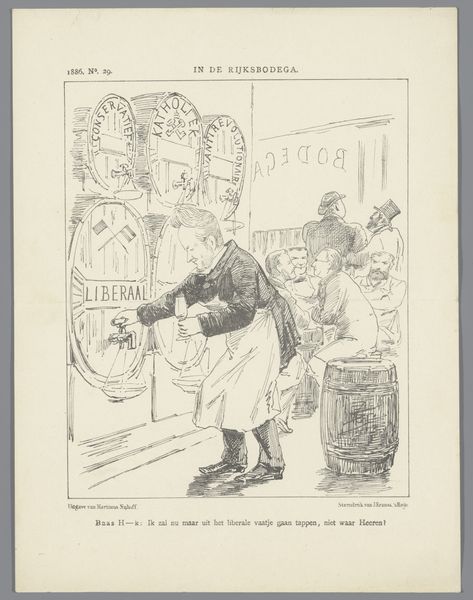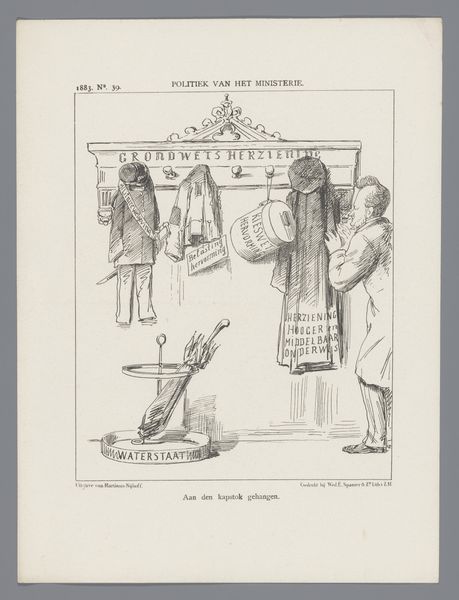
Spotprent op het overleg met Engeland over de afstand van de kust van Guinea, 1871 1871
0:00
0:00
print, engraving
# print
#
caricature
#
old engraving style
#
history-painting
#
engraving
Dimensions: height 275 mm, width 215 mm
Copyright: Rijks Museum: Open Domain
Editor: Here we have "Spotprent op het overleg met Engeland over de afstand van de kust van Guinea," or "Caricature on the consultation with England about the distance from the coast of Guinea," an engraving by Johan Michael Schmidt Crans, from 1871. It depicts these rather agitated, sculpted figures seemingly bound together. It looks quite tense. What's your take on this image? Curator: This piece is really interesting when we consider the social and political history it speaks to. Look at the figure towering over the others, straining against the banner reading "Traktaaten met Engeland"—Treaties with England. Editor: Yes, it's almost like he's being constrained by these treaties. Curator: Exactly. How might we interpret this visual representation within the context of 1871, considering the role of colonial powers at the time? What were the social expectations that might have shaped the reception of this political cartoon? Editor: So, it’s not just about the consultation, but also perhaps about the perceived burden or limitations imposed by these treaties with England. And the smaller figures huddled below, do they represent Guinea itself? Curator: Precisely. And consider where this image would have been displayed—most likely in a periodical—and who would have been consuming it. It provides a very pointed perspective on the Dutch relationship with England regarding colonial territories and the public discourse surrounding those relationships. The artist uses visual shorthand, caricature, to comment on international politics for public consumption. Editor: That makes it much clearer. It's a visual argument, influencing public opinion on the agreement itself! Curator: Indeed, understanding the social and political climate transforms our reading of this artwork, highlighting its role in shaping public perception of international relations. Editor: Thanks! Seeing it in terms of public perception and political argument really shifted how I understand it. Curator: And for me, thinking about the visual language of political discourse keeps these historical anxieties present.
Comments
No comments
Be the first to comment and join the conversation on the ultimate creative platform.
